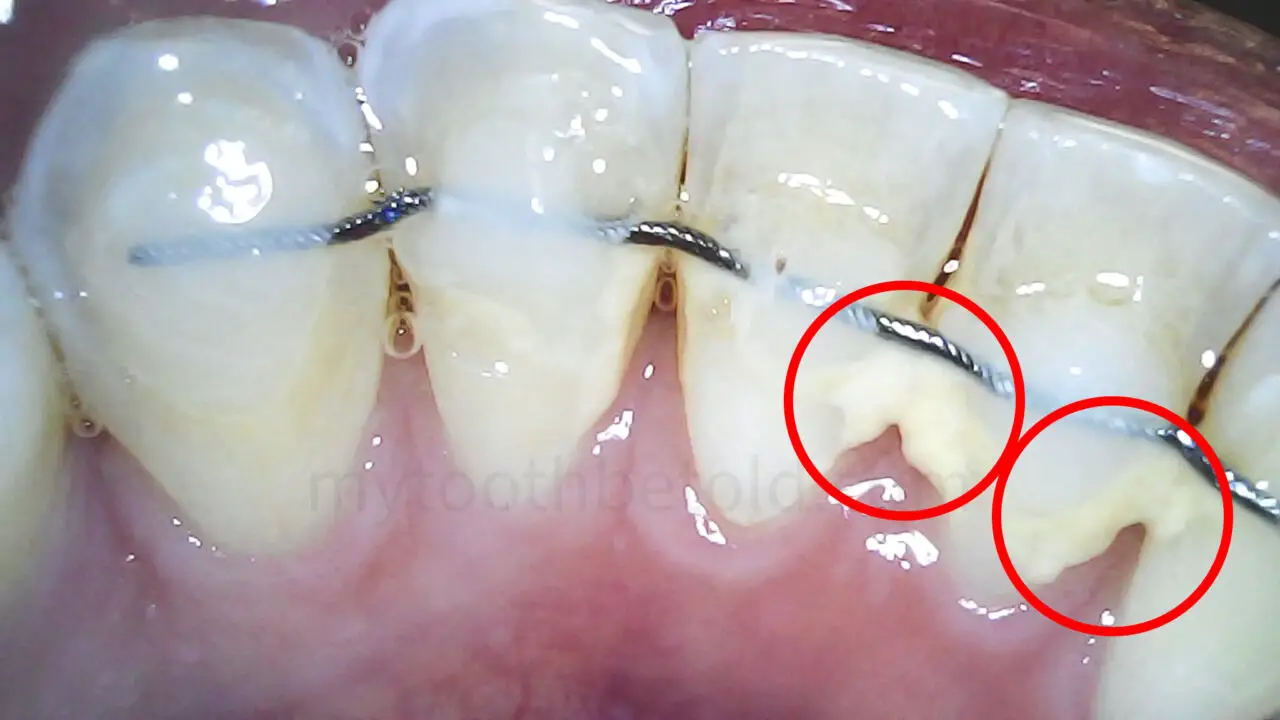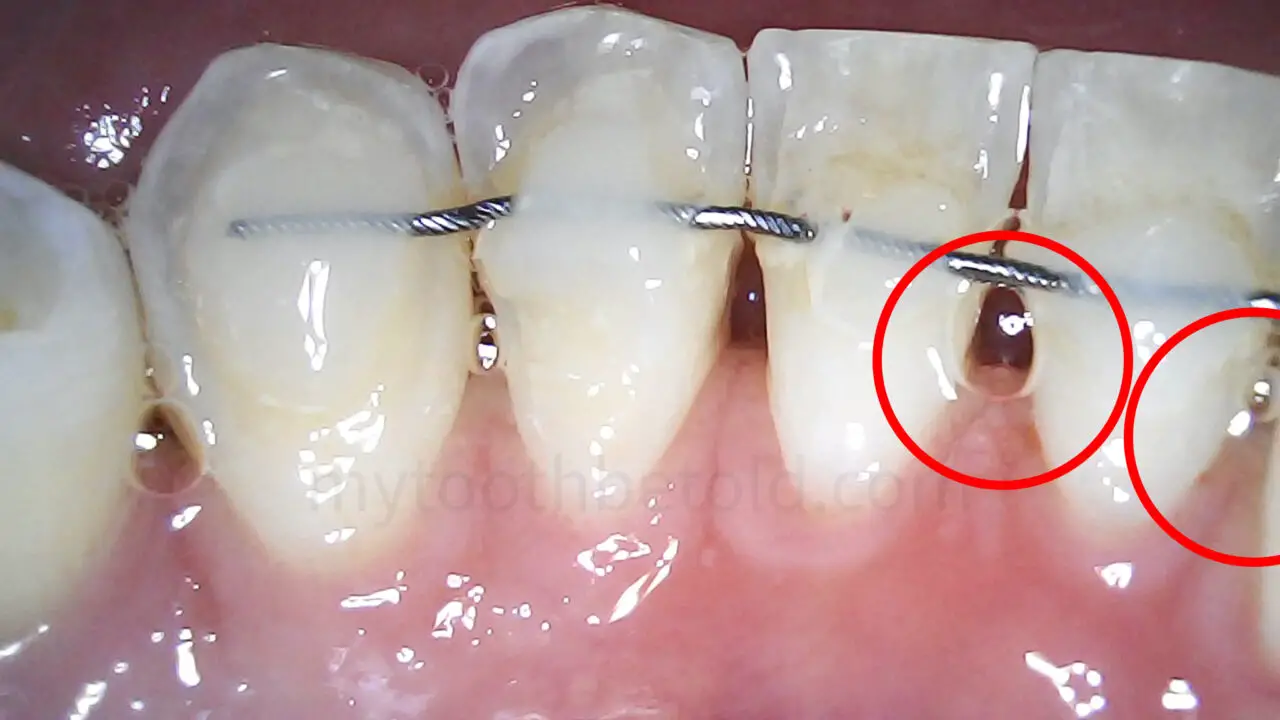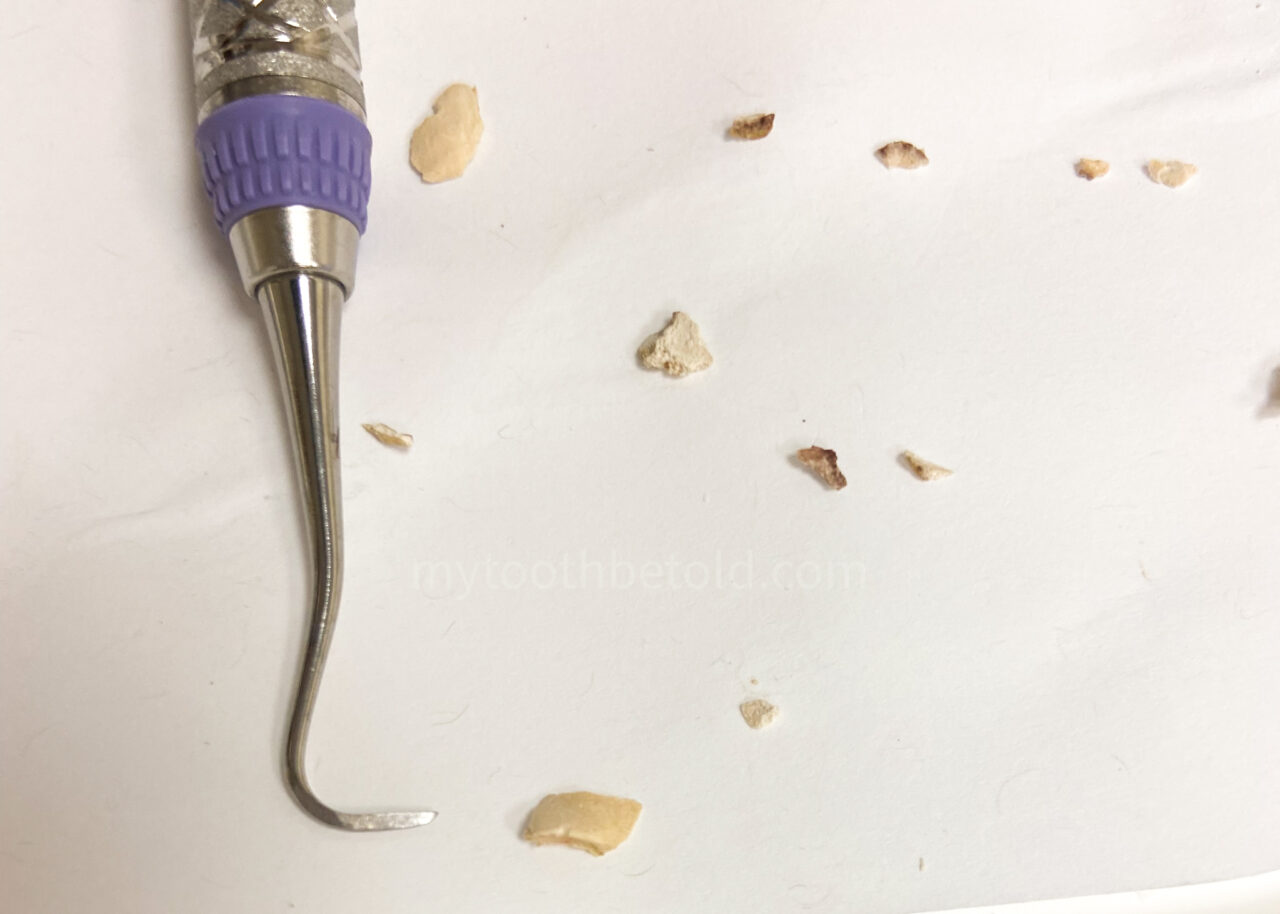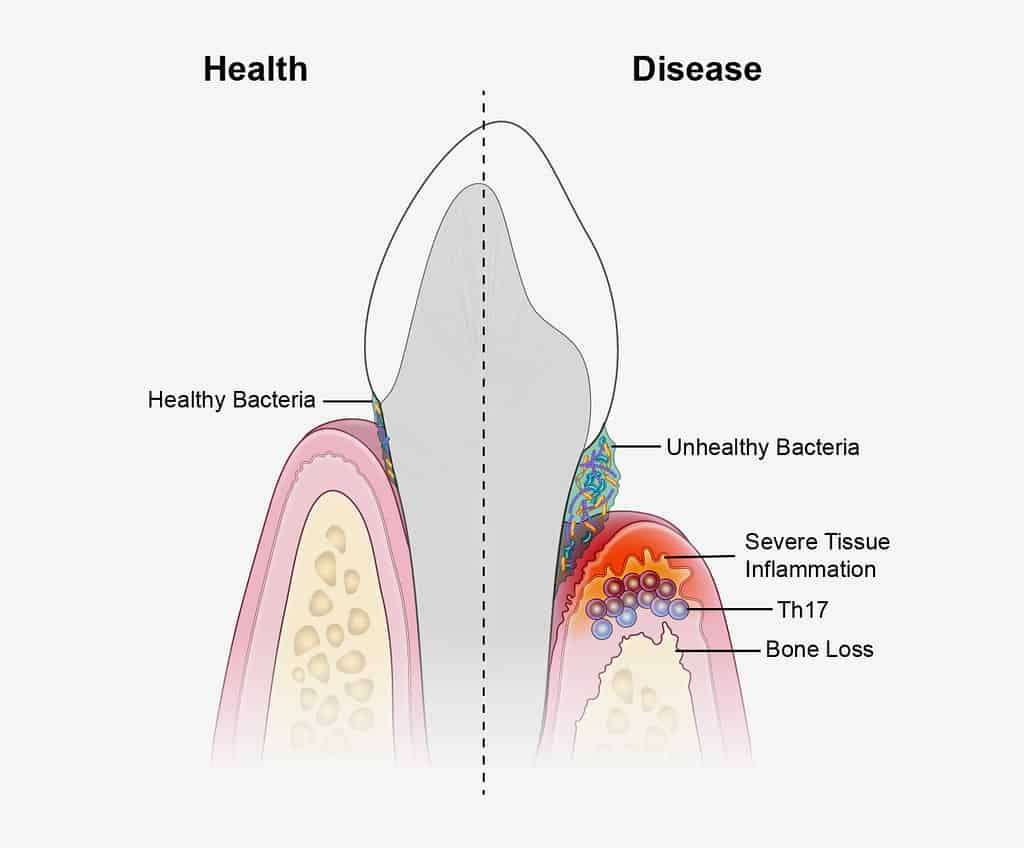
Soft plaque on the teeth that is not removed with regular brushing, flossing or interdental brushing, will combine with the minerals in your saliva and calcify the plaque onto the teeth. But can you brush off calcified dental plaque in your teeth?
Hardened plaque, also known as tartar or dental calculus, cannot be removed by tooth brushing. To remove dental calculus, see a dental hygienist to scale your teeth safely without damaging teeth. Mechanical action from a toothbrush, floss and interdental brushes can remove soft plaque and is essential for oral hygiene.
In this post, I explain further the difference between tartar (calculus) and plaque, where people build up the most calculus on their teeth, ways to prevent calculus accumulation and what happens if you don’t remove it.

Tartar vs. plaque: the formation process and differences
For accuracy purposes, I will use the word calculus instead of tartar.
The formation of calculus and plaque is constant in the mouth.
Our mouth contains over 800 species of bacteria, most essential for oral and total body health. Some bacteria help protect our bodies, break down our food, and aid in glucose control.
But when the number of bacteria in the mouth continues to rise, a biofilm forms on the teeth, forming dental plaque. And our oral microbiome can begin to be disbiotic.
What is dental plaque?
Dental plaque is a sticky soft mass that consists of bacteria and food debris that continuously forms on the surface of teeth. Dental plaque is an organized biofilm that results from bacterial colonization and metabolic processes. Plaque can be removed through flossing and brushing regularly.
Dental plaque hardens into calculus (tartar)
Calculus is hard, calcified plaque that has adhered to the tooth surface and can occur underneath and above the gum line.
Our saliva contains many minerals, and those minerals calcify the plaque present on the teeth to the teeth. The calcification process starts after 48 hours if the plaque/biofilm is not removed.
That is why it is essential to floss at least once every two days (every day is best), use interdental brushes that are measured to the correct space (ask your dental professional to measure the interdental space so you are using the correct size), and brush at least twice daily to interrupt the calcifying plaque cycle on the tooth surface.

Because of the bond between the calculus and the tooth, it cannot be removed by brushing, flossing, or any other over-the-counter remedy. Only trained dental professionals can safely remove calculus from the teeth.
In this post I wrote, linked below, I go into more detail about calculus removal and what over-the-counter remedies are being suggested by people that do not work!
Read Now: How to Remove Tartar From Teeth Without Going to the Dentist?
Plaque can only be removed by mechanical action. It is incredibly sticky and slimy. It is an intricate ecosystem of biofilm that is very much a living substance on the teeth.
Patients have told me they rinse with mouthwash instead of brushing their teeth. I explain to them the properties of dental plaque and how rinsing with mouthwash only affects free-floating bacteria and cannot penetrate the complex mass of plaque.
Also, many mouthwahes are acidic, which is not ideal for the health of the teeth. Enamel starts to soften and demineralize below a pH of 5.5.
It is similar to washing dishes. You need to scrub off hardened food on dishes, you can’t just rinse them, and they are clean.
Where do people accumulate the most calculus/tartar?
When I have my patients in my dental chair, I always discuss where the areas in their mouths have the most deposits.
In general, people tend to accumulate the most calculus on the tongue side of the mandibular (bottom) anterior teeth and the cheek side of the maxillary (upper) molars due to the close proximity of the submandibular and parotid salivary gland ducts.
Saliva contains many minerals that calcify the bacteria in our mouths to the teeth to form calculus.
Because there is more saliva accumulation around these areas, there is more calcification of bacteria.
I also encourage my patients to clean their teeth like they usually would right before their dental appointment so I can observe areas where they are missing.
Not only does this help me by making the appointment more effective, but I can also give accurate guidance to the patients on specific techniques that can help improve the removal of soft deposits and prevent calculus (hard deposits) from forming.
Prevent calculus formation; Advice from a hygienist
You can’t prevent calculus from forming 100%. You can, however, drastically reduce the amount of calculus that forms by preventing it with consistent and thorough oral hygiene routines.
Again, floss at least once every two days (every day is best) and brush at least twice a day for two minutes, preferably with an electric toothbrush.
Brushing with an interdental brush will remove the biofilm in the convavities on the tooth, where dental floss cannot clear.
Another way to prevent calculus formation is to have regulare maintenance appointments with your dental professional. Preferably a registered dental hygienist, as we are specifically trained for removing calculus.
When calculus is present on the teeth, it has a rough texture and will attract more bacteria to the area, increasing the amount of calculus forming.
Having regular dental hygiene appointments is essential for oral health, as well as total health.
To understand the behind-the-scenes details of a dental hygiene appointment, below is a post I wrote, breaking down the appointment so you can understand what is happening.
Read Now: How Dental Hygienists Clean Teeth! What You Need to Know!

What happens if you don’t remove dental calculus?
Not removing calculus safely and correctly, or infrequently can lead to severe dental issues such as; tooth decay (cavities), gum disease, increased bleeding, bad breath, and can lead to tooth loss. Inflammation caused by gum disease causes bacteria to enter the bloodstream, travelling throughout the body.
Calculus attracts more bacteria, causing localized inflammation and dilation of the blood vessels, allowing bacteria to enter the bloodstream and affecting the whole body.
I am passionate about educating people on the connection between oral and total body health. If your mouth is not healthy, your body is not healthy!
And if you don’t already have a dental hygiene appointment booked, this is your friendly reminder to book!
I hope this information has helped you understand dental calculus and oral health in more detail.
Have a wonderful day,
Holly 🙂

